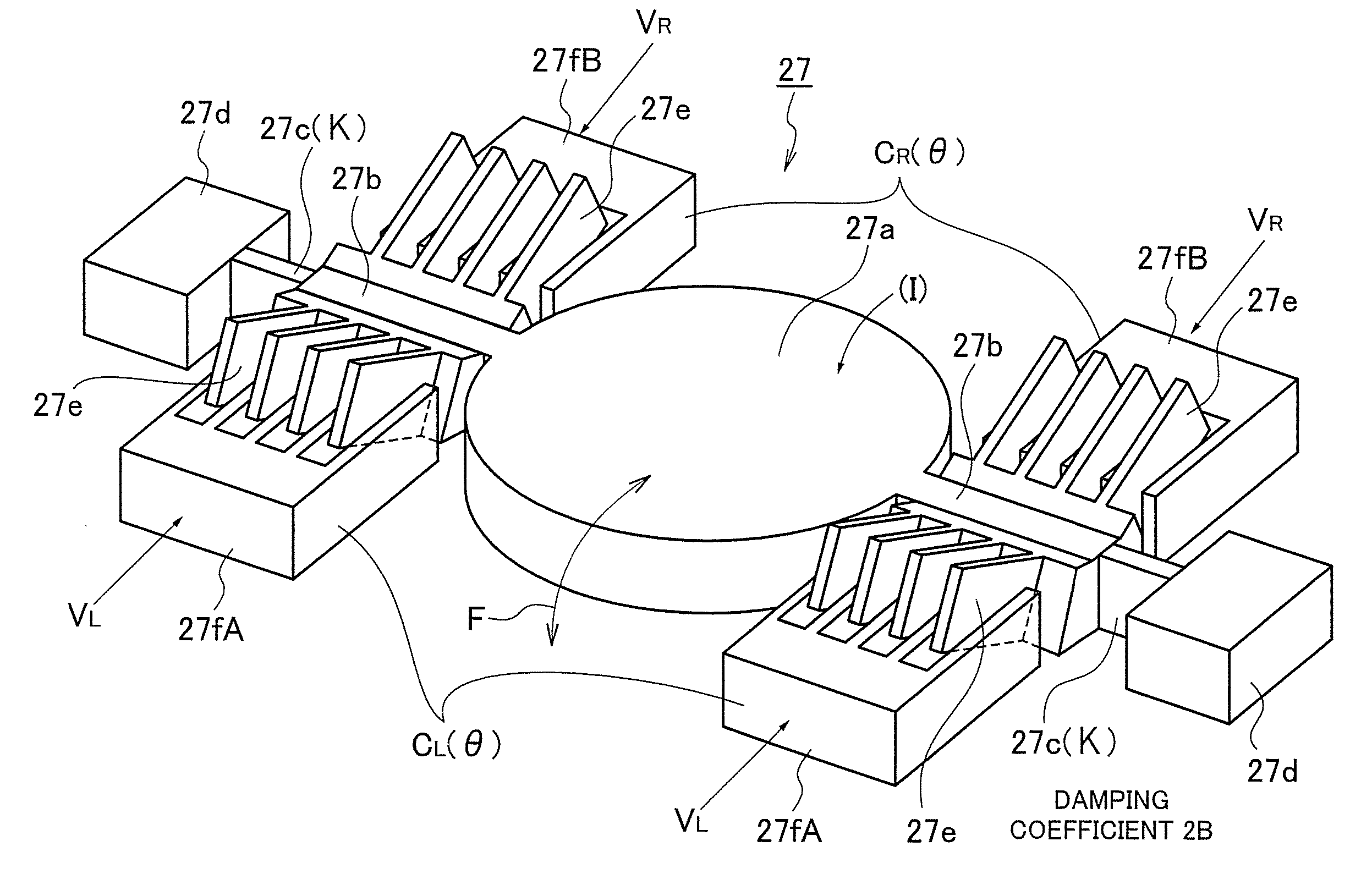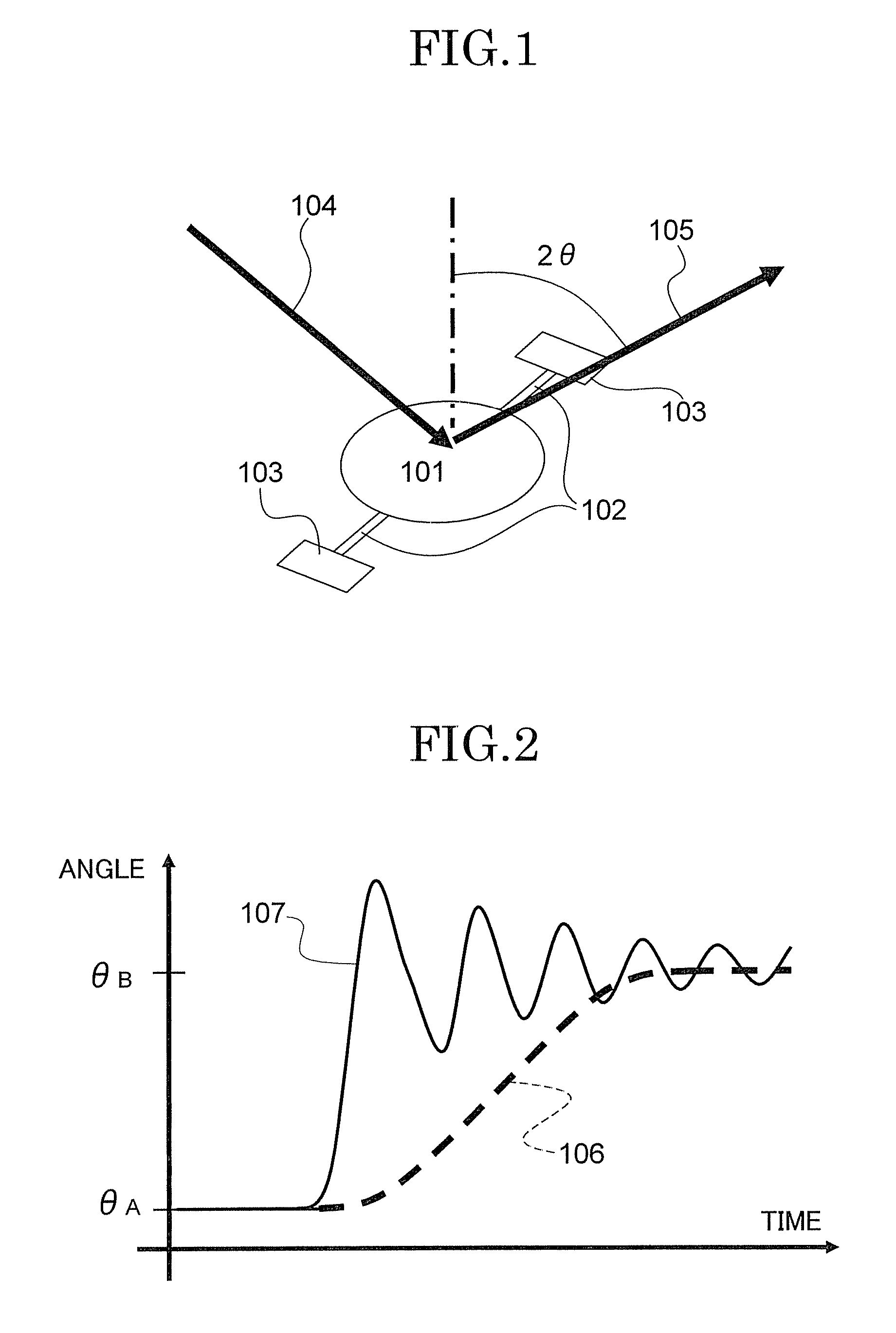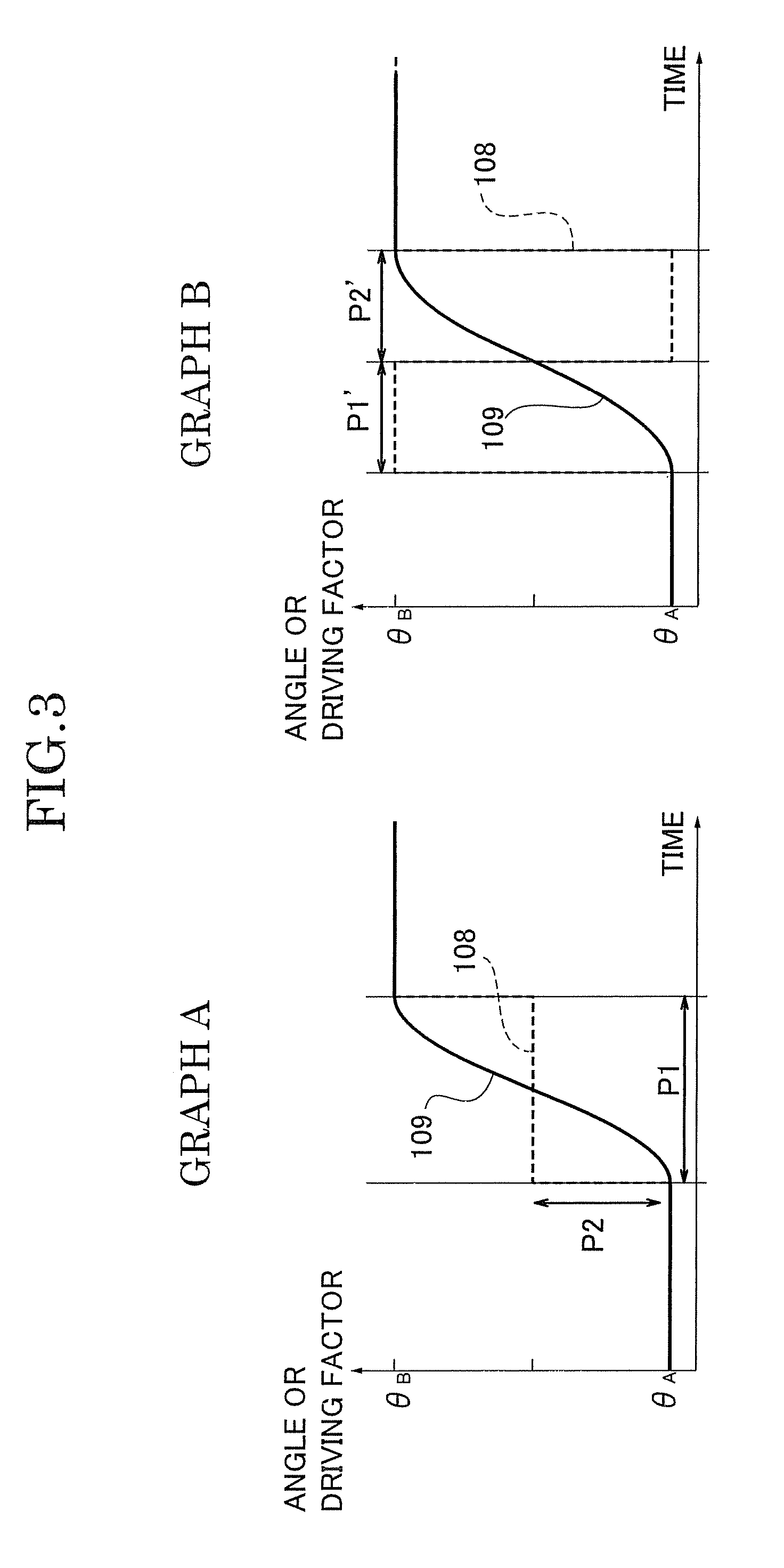Method of driving MEMS mirror scanner, method of driving MEMS actuator scanner and method of controlling rotation angle of MEMS actuator
a technology of mirror scanner and actuator, applied in the field of microelectromechanical systems, can solve the problems of unintended mirror angle response, unattainable time-angle response feature required by each specific application, loss of part of the advantages of using a mems mirror scanner, etc., to achieve the desired time-angle response feature, ensure the degree of freedom in driving, and quickly determine parameters
- Summary
- Abstract
- Description
- Claims
- Application Information
AI Technical Summary
Benefits of technology
Problems solved by technology
Method used
Image
Examples
embodiment
[0065]Generally, in the case of the MEMS mirror scanner illustrated in FIG. 1, the equation of motion with respect to the rotation angle θ of a mirror 101 is expressed by the following equation, where I is a moment of inertia of the rotating part including the mirror 101, 2B is a damping factor, κ is a spring constant, and TL and TR are driving torques of the right and left actuators, respectively.
I{umlaut over (θ)}+2B{dot over (θ)}+κθ=TTotal(θ,w) (1)
where {umlaut over (θ)}=d2θ / dt2, {dot over (θ)}=dθ / dt
[0066]In this case, the coefficients of the rotation angle, the first order derivative of the rotation angle with respect to time and the second order derivative of the rotation angle with respect to time are denominated an elastic term, a damping term and an inertia term, respectively. When the motion of an actuator is not angular but translational, the coefficients of the displacement, the first order derivative of the displacement with respect to time and the second order deriva...
PUM
 Login to View More
Login to View More Abstract
Description
Claims
Application Information
 Login to View More
Login to View More - R&D
- Intellectual Property
- Life Sciences
- Materials
- Tech Scout
- Unparalleled Data Quality
- Higher Quality Content
- 60% Fewer Hallucinations
Browse by: Latest US Patents, China's latest patents, Technical Efficacy Thesaurus, Application Domain, Technology Topic, Popular Technical Reports.
© 2025 PatSnap. All rights reserved.Legal|Privacy policy|Modern Slavery Act Transparency Statement|Sitemap|About US| Contact US: help@patsnap.com



